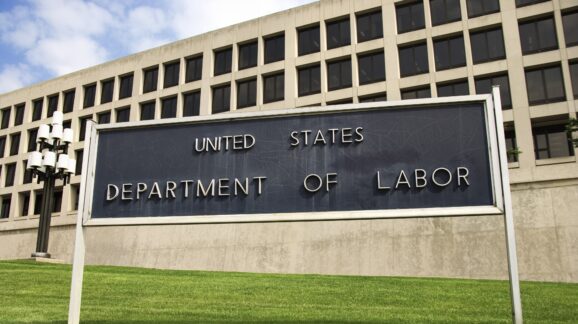Five ideas for Secretary Chavez-DeRemer

Photo Credit: Getty
President Trump’s newly-confirmed labor secretary, Lori Chavez-DeRemer, has been viewed with suspicion by many on the free-market right. She can rectify that by adopting the same free-market approach as Trump’s previous picks for the cabinet position, Eugene Scalia and Alexander Acosta. We at Competitive Enterprise Institute have some ideas on how she can do that.
The suspicion derives from Chavez-DeRemer’s brief term in Congress, where she co-sponsored both the Protecting the Right to Organize (PRO) Act and the Public Service Freedom to Negotiate Act. Both pieces of legislation would give union leaders more powers to force workers to get in line. Chavez-DeRemer largely disavowed her support for them during a Senate hearing. That was apparently enough to secure her confirmation by the full Senate a week later.
That was a start but here’s a few more thing Chavez-DeRemer can do to get the Department of Labor (DOL) off to a good start.
- Restore the two-factor test for determining employment status. This is the low-hanging fruit, as it would restore a rulemaking made during the first Trump administration. Astonishingly, the federal government does not have a clear definition of an employer/employee relationship. Instead, it allows regulators to judge matters on a case-by-case basis, looking at as many as six factors in their considerations. This ambiguity is a problem for the growing gig economy sector, which relies on freelance labor. In Trump’s first term, DOL said regulators should instead focus on two factors: an individual’s degree or control over the work and his or her ability to profit or make a loss from it. This brought much-needed clarity to the test. The Biden administration reverted things back to the six-factor test, but the first Trump administration’s rule remains the better approach and should be restored.
- Finish the update to the Labor-Management Reporting and Disclosure Act (LMRDA). Another bit of low-hanging fruit: In late 2020, DOL proposed a rule to update the LMRDA, which had been hollowed out and left ineffective by the prior administration. The proposal would have enhanced the current law by requiring unions to: Differentiate between expenses relating to contract negotiations, representational activities, organizing, political activities and lobbying; expand reporting requirements for membership dues, agency fees, per capita payments, and fines; Report the latest change in the union’s bylaws; report whether the union has a strike fund, and; report whether the union is in trusteeship, among other measures to requiring unions to provide their members with greater financial transparency. There is no excuse for any of this to not already be required of unions. The rulemaking was proposed late in the administration, however, and not finished by the time the Biden administration took over, which promptly ignored it. The current administration should get back to work on it. Most of the groundwork has already been done.
- Push to abolish the federal minimum wage. The current federal minimum wage is $7.25 an hour. For a person working a 40-hour week, that’s about $15,000 annually. Critics who say that that isn’t a living wage are entirely correct, but that’s an argument for getting rid of it altogether, not raising it. The one size fits all federal minimum has been proven to be unnecessary. Years of tight labor markets have brought wages well above that. The current median wage in the US is just shy of $62,000 annually. Meanwhile states have become aggressive with instituting their own minimums, for good or ill. Many are more than twice the federal rate. Let them continue to experiment and see where that goes. The federal government doesn’t need to take a role here.
- Survey union members. The LMRDA makes it the federal government’s policy to “eliminate or prevent improper practices on the part of labor organizations, employers, labor relations consultants, and their officers and representatives.” Shouldn’t the workers’ priorities count when it comes to holding their employers and representatives accountable? The problem is, we have little information on those concerns. Most major polling firms don’t bother to survey them specifically. Election year pollsters, for some reason, tend to ask voters if they are members of union households, not union members, a curious approach that skews the data. That’s when they even bother to ask. Many unions poll their members but rarely release the full data to the public. The upshot of this is we know very little about how union members feel and what they really want. The DOL can fix that by asking them directly about their employers’ and their unions’ practices and making the results public.
- Survey freelancers. The growth of the so-called gig economy has created a fast-growing category of part-time, freelance workers. Some liberal activists, including unions, claim these workers are being exploited by not being treated as traditional employees. These groups have pushed to change laws relating to employment to prevent them from being classified as contract workers. What do the workers themselves think? As with the union members, we don’t know nearly enough. DOL can clear the matter up by doing some in-depth polls on these workers and making the information public.